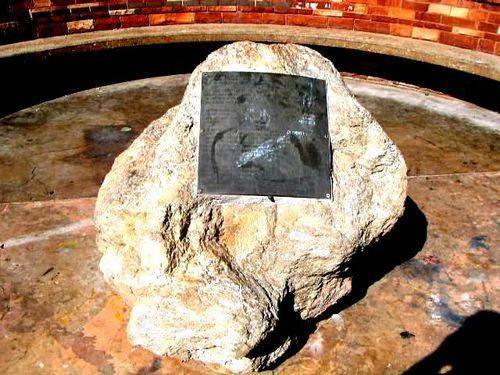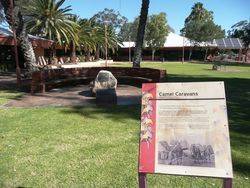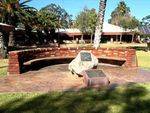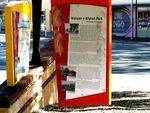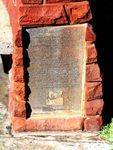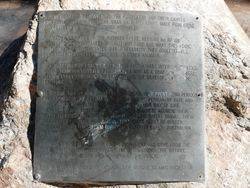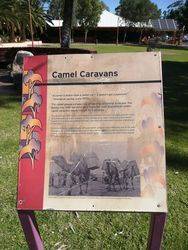
Home » Themes » Landscape » Settlement
Afghan CameleersPrint Page 
The memorial and park commemorate the contribution of Afghan Cameleers. Alice Springs Council wanted to more formally recognise the role of the Cameleers in developing the region and as a part of the diverse community so renamed the park around the Civic Centre. The Cameleer`s Islamic faith also found a home here.
In 1921 the semi-retired Cameleer Saleh (Charlie) Sadadeen leased the block which now houses the Council`s Civic Centre. Sadadeen was born in the Punjab, northwest India, and arrived in Alice Springs in 1890 after ten years in Australia and previous service in the British Army as a Cameleer. Two tall date palms outside the Council Civic Centre were planted in 1916 by Walter Smith who worked with the cameleers bringing supplies from the railhead at Oodnadatta.
In front of the palms is a monument and seat, built in the 1980`s, dedicated to the Cameleers. The wording on the plaque on the monument is difficult to read. The park was rededicated in 2001 and a plaque was added to the seat in 2002 commemorating the last camel train.
Location
| Address: | Todd Street, Civic Centre, Alice Springs, 0870 |
|---|---|
| State: | NT |
| Area: | AUS |
| GPS Coordinates: | Lat: -23.701258 Long: 133.882225 Note: GPS Coordinates are approximate. |
Details
| Monument Type: | Monument |
|---|---|
| Monument Theme: | Landscape |
| Sub-Theme: | Settlement |
Dedication
| Approx. Monument Dedication Date: | 1980s |
|---|
This memorial is dedicated to the cameleers and their camels who from 1870, and for more than half a century, made pioneering and settlement of the outback possible.
The camel was part of the outback scene, needing no roads, travelling long distances without any food but what they found on the way. Although water was a necessity they could travel dry stages that were impossible to other animals.
They were used in early exploration of the vast interior, provided a vital transport system for supplies and as a draft animal were seen on every construction camp during the development of the Territory.
The way of life of the cameleer was hard, they spent long periods away from home, indeed many of them had no permanent base and simply lived where their jobs took them. Their way of life, their moral and physical courage, their business acumen, their ability to withstand the hardship of cross-country travel, their uncanny skill in the handling of that giant beast of burden, the camel, all fitted them for their place in early Australian history.
The money for the building of the monument has come from the Northern Territory Government, the Town Council, the Rotary, Lions and Kiwani Clubs and members of the public.
This plate was funded by the Adelaide Mosque Islamic Society of South Australia.


